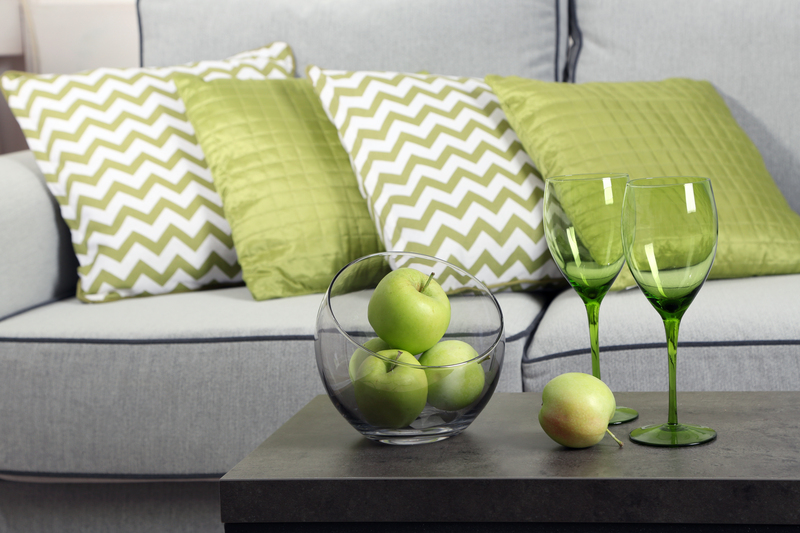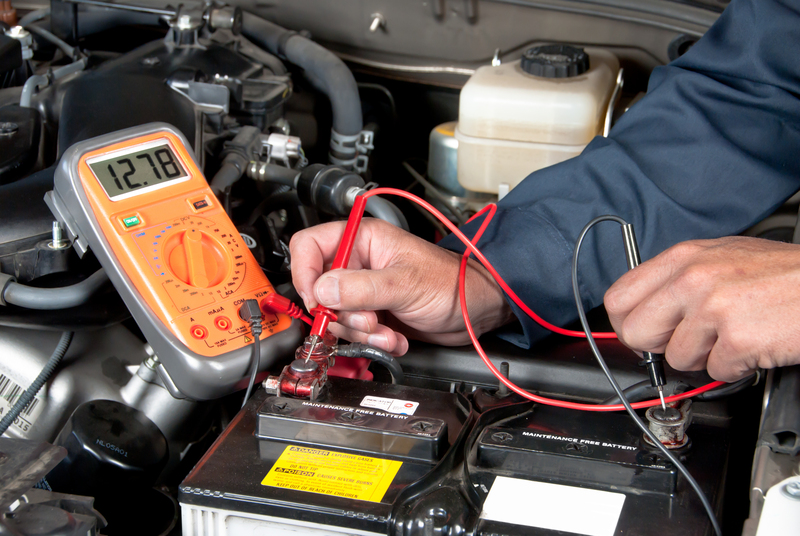The Best Materials and Methods for Packing Up Your Home
Packing up your home for a move can be a daunting process, but with the right approach and optimal supplies, you can streamline the experience and protect your belongings. Whether you're moving across the country or just around the block, using the best materials and following proven packing methods can help ensure your home's contents arrive safely and efficiently. This comprehensive guide highlights the best materials for packing your home and shares expert-proven packing strategies for a stress-free relocation.

Why Proper Packing Materials and Methods Matter
When it comes to moving, using the right packing materials and techniques is essential. Not only does it prevent damage to your possessions, but it also saves time and lowers the risk of injury or loss. Efficient packing makes unpacking and settling into your new home quicker and more enjoyable. Investing in high-quality supplies pays off in peace of mind and protection for your valued items.
Essential Packing Materials Every Homeowner Should Know
Understanding the various moving supplies and packing materials can help you make informed decisions while preparing for your move. Here are the most effective materials you should consider:
1. Moving Boxes
- Standard Cardboard Boxes: Available in various sizes, these are the backbone of any move. Choose from small, medium, and large boxes to suit different items throughout your home.
- Specialty Boxes: Wardrobe boxes (with hanging rods), dish packs (reinforced for fragile kitchenware), and picture boxes (for artwork/mirrors) offer tailored solutions.
- Plastic Bins: For eco-friendly and reusable packing, sturdy plastic bins provide superior durability and protection--especially useful for moisture-prone areas.
- Tip: Always reinforce the bottom of your boxes with extra packing tape for added security.
2. Packing Paper
- Unprinted Packing Paper: Ideal for wrapping dishes, glassware, knickknacks, and electronics. Keeps items scratch- and dust-free without the risk of ink transfer.
- Newspaper (with caution): Use only as a backup, as print can transfer and stain your belongings. Reserve newspaper for non-sensitive items or as outer padding.
3. Bubble Wrap & Cushioning Materials
- Bubble Wrap: Provides unbeatable shock absorption for fragile items like glassware, ceramics, and electronics.
- Foam Sheets or Peanuts: Useful for added padding around delicate items and for filling empty spaces in boxes to prevent shifting during transit.
- Furniture Pads & Moving Blankets: Safeguard large furniture pieces, artwork, and mirrors from scratches, dings, and dust while moving.
4. Packing Tape
- Heavy-Duty Packing Tape: Secure your boxes with durable, wide tape to reinforce seams and prevent accidental openings.
- Tape Gun/Dispenser: Speeds up the process and gives a clean, strong seal.
5. Stretch Wrap
- Plastic Stretch Wrap: Useful for bundling loose or awkwardly shaped items and keeping drawers shut on furniture during the move.
6. Labels and Markers
- Permanent Markers: For clearly labelling box contents and destination rooms (e.g., "Kitchen - Dishes").
- Color-coded Stickers: Efficient for large homes with multiple rooms; use colors to quickly identify boxes' intended destinations.
7. Ziploc Bags and Small Containers
- Plastic Zip Bags: Secure hardware, screws, and small parts for reassembly of furniture or electronics later.
- Tupperware or Plastic Containers: Safely contain loose kitchen utensils, gadgets, and miscellaneous items.
Packing Methods: Step-by-Step Guidance for Each Room
Knowing the most effective ways to pack up your home is as important as selecting the right packing materials. Let's break down proven packing methods by room, ensuring nothing gets overlooked:
Packing the Kitchen
- Declutter: Start by donating, recycling, or discarding items you no longer need or use.
- Use Dish Packs: Place a layer of crumpled packing paper on the bottom. Wrap dishes individually and stand them on edge, not flat, for maximum strength. Fill all gaps with paper or foam peanuts.
- Wrap Utensils and Small Appliances: Secure cords, disassemble loose parts, and wrap with packing paper or bubble wrap. Place knives in protective sleeves or roll them in towels.
- Store Liquids Properly: Use plastic wrap under lids, then seal with tape to prevent leaks.
Moving the Living Room
- Protect Electronics: Use the original boxes whenever possible. Remove cables and remote batteries, wrap components in anti-static bubble wrap, and label cables for easy reassembly.
- Books and Media: Pack heavy items like books in small boxes layered flat. For DVDs and games, use plastic bins or sturdy boxes.
- Artwork: Use specialty picture boxes or sandwich wrapped pieces between moving blankets secured with stretch wrap.
- Furniture: Disassemble where possible, bag all screws and keep them taped to the main pieces. Wrap surfaces with moving blankets for scratch prevention.
Preparing the Bedroom
- Wardrobe Boxes: Transport clothes on hangers with minimal wrinkling. For folded clothes, suitcases or medium boxes work well.
- Mattresses: Protect with mattress covers. Avoid plastic for long-term storage as it can trap moisture.
- Jewelry: Use pill organizers or small pouches to keep delicate pieces from tangling.
- Bedding: Pack clean bedding in large clear bags or boxes, and label accordingly for quick access the first night.
Safeguarding the Bathroom
- Toiletries: Seal liquids in resealable plastic bags, double-bag if needed.
- Towels and Linens: Use as padding for fragile items or pack them together in a box marked "Open First."
Packing the Garage or Shed
- Tools: Group hand tools in toolboxes or wrap them in towels and pack securely. Drain fuel from power tools and discard hazardous materials per local regulations.
- Outdoor Equipment: Clean and dry thoroughly--pack small parts in ziploc bags. Bundle rakes, brooms, and other tall items using stretch wrap.
Expert Tips for Packing Up Your Home Efficiently
Over the course of countless moves, professional movers have developed top methods for packing an entire house:
- Start Early: Begin the packing process several weeks before your move date. Pack infrequently used items first.
- One Room at a Time: Focus on completing one space before moving to the next to avoid missing items and maintain organization.
- Label Everything: Mark each box with its room and contents. Indicate "Fragile" when necessary, and use directional arrows for boxes that must stay upright.
- Don't Overload Boxes: The maximum weight for any moving box should be 50 pounds. Overweight boxes can break and are tough to lift.
- Pack an Essentials Box: Pack one box or suitcase with must-haves for your first few days (toiletries, chargers, clothes, medication, and towels) so you aren't left searching through boxes on arrival.
- Use Storage Bags: Utilize vacuum-sealed bags for bulky clothing, bedding, or seasonal items to save space.
- Protect Valuables: Pack jewelry, important documents, and heirlooms separately and transport them personally.
- Keep Hardware Together: As you disassemble furniture, tape screws and hardware in labelled bags to corresponding items.
Eco-Friendly Packing Materials and Methods
For those wanting an environmentally conscious move, there are several eco-friendly packing materials and best green methods:
- Rent Reusable Moving Bins: Many companies now offer durable plastic bins for rent, eliminating box waste.
- Use Recycled Paper: Instead of bubble wrap, use shredded paper, towels, or biodegradable peanuts for padding.
- Donate or Sell Old Boxes: After the move, give boxes to friends, local businesses, or recycling centers.
- Wrap with Linens: Use sheets, towels, and clothing instead of buying disposable cushioning.
Common Packing Mistakes to Avoid
Even the best intentions can go awry without proper planning. Watch out for these frequent moving and packing mistakes:
- Using Weak Boxes: Repurposing old, damaged boxes increases risk of breakage. Always check for sturdy construction.
- Forgetting to Label: Unmarked boxes complicate your move; always detail contents and destination.
- Procrastination: Waiting until the last minute leads to hastily packed and improperly protected items.
- Underutilizing Soft Items: Don't overlook the packing power of clothing, towels, and linens for padding delicates.
- Ignoring Safety Precautions: Always lift with your legs, not your back, and use proper handling tools like dollies for large or heavy items.

Frequently Asked Questions about Packing Up Your Home
What are the best packing materials for fragile items?
Bubble wrap, foam, and unprinted packing paper are the gold standard for fragile items. Always double-wrap and cushion with extra padding or soft linens for maximum protection.
How early should I begin packing my home?
Start sorting and packing rarely used items 4-6 weeks prior to your move. As moving day approaches, gradually tackle more essential areas, leaving only daily necessities until the last 1-2 days.
How can I safely pack electronics?
Use original boxes whenever possible. If unavailable, wrap electronic devices in anti-static bubble wrap. Store cables separately and clearly label. Fill boxes with foam or paper to avoid shifting.
Is it worth investing in specialty boxes?
Yes, for high-value or unusually shaped items, specialty boxes (like dish packs or wardrobe boxes) offer superior protection and save time during packing and unpacking.
Can I pack liquids and hazardous materials?
Generally, movers will not transport hazardous materials. For liquids, double-seal containers, but consider disposing of or donating hazardous liquids before moving.
Conclusion: Master Your Move with the Best Packing Methods and Materials
Packing up your home doesn't need to be an overwhelming ordeal. By investing in high-quality boxes, cushioning, and packing tools--and following proven room-by-room packing strategies--you'll not only protect your belongings but also gain peace of mind on moving day. With a little planning, eco-friendly choices, and attention to detail, you can make your move more efficient, organized, and stress-free. Remember, the right moving supplies and smart packing techniques can make all the difference for a safe, smooth, and successful transition to your new home.
Are you ready to put these packing tips into action? Use this guide as your roadmap for an expertly packed household and a happier move!



